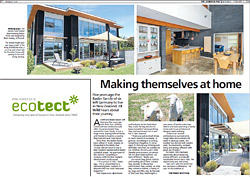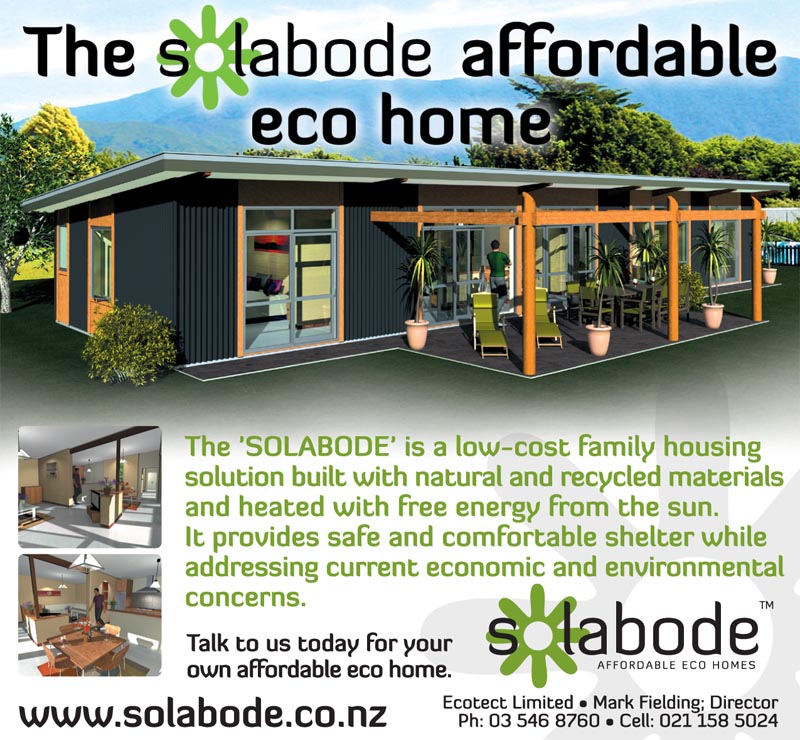
Publications |
||||
|
|
||||
|
New Zealand has seen a lot of new developments in the last few years from people in the architectural and building community, many of whom seem to be getting on the green bandwagon – and about time too! One particular green building subject, the so-called passive house (or Passivhaus) movement is growing with intensity and is fast becoming the catch cry of best practice standard for residential building design in New Zealand. Many people have heard about the passive house movement and most believe it to be the highest standard for energy efficiency house design – and it certainly is – regardless of whether it is needed. WHAT IS A ‘PASSIVE HOUSE’? Read the whole article as PDF (0.6MB) |
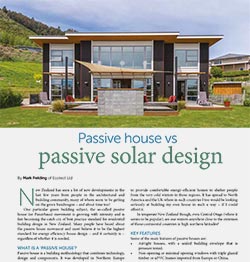
|
|||
|
|
||||
|
||||
|
|
||||
|
Nelson has her own Garbage Warrior, every bit as inventive and passionate as his mentor Michael Reynolds, the founder and builder of Earthships . Nelson’s Mark Fielding, Director of Ecotect Ltd and Solabode Ltd., is a professional architectural designer and NZ Licenced Building Practitioner. In addition to his mainstream work he designs and builds emergency shelters, eco-cabins and homes from used shipping pallets and other recycled waste materials. While working for over 35 years as an architectural and building designer Mark has done all he can “to make my buildings better, more energy efficient, more locally made and to use healthy and safe materials which lighten the load on the planet.” But he also enjoys “being out there on the fringe,” experimenting with building design using waste materials. “I’m not the first to recognise that the by-products of our industrialised system are not in fact ‘waste’ but a huge resource. So much is thrown away and can be re-used to develop ways for people to build truly affordable and sustainable dwellings.” While Michael Reynolds, whom Mark met in Christchurch recently, uses old earth-rammed tyres, bottles and beer cans for much of his Earthship construction, Mark is always on the lookout for waste materials he can easily find locally. As well as discarded shipping pallets he also uses pre-loved corrugated roofing iron for roofing and cladding, old tyre treads for roof shingles or weatherboards, second-hand carpet uplifts for ceiling and wall linings, waste polystyrene packaging for insulation and other building site and timber waste. Mark is proud that his buildings require almost no additional new materials and so save felling trees, mining metals, consuming power in the manufacturing process, burning fuel through transportation and pumping out greenhouse gas emissions. They also keep all that ‘garbage’ out of our landfills. But Mark and Michael Reynolds’ shared mission is not just about building with garbage. It is also about reducing consumption, living in a sustainable way and “reducing the control that others have over us by producing our own electricity, collecting our own water, growing our own food , dealing with our own organic waste and being in a position to support others to do the same. “People often ask me how much extra an Eco house costs over a normal house. My answer is always ‘nothing!’ This comes as a surprise to most people. But the logic is simple. When Mark builds a ‘normal’ house he ensures that it is made with non-toxic materials, is space efficient to save on materials and cost, well-insulated, double-glazed, uses thermal mass, has solar water heating and quality lined curtains. To Mark these features are essential for a house to be comfortable, healthy and keep power bills under control. He also uses materials that are simple and natural with low embodied energy and can be sourced locally so our businesses stay healthy and provide jobs. Mark is excited about the challenges ahead for his pallet structures: “affordability is still an elusive goal.” These are complex buildings and use a lot of materials, even though they are recycled. They also use a lot of labour. “Unless you build it yourself at no cost. I also want to build in an attractive contemporary style so people don’t realise it’s made out of stuff others have thrown away!”
|
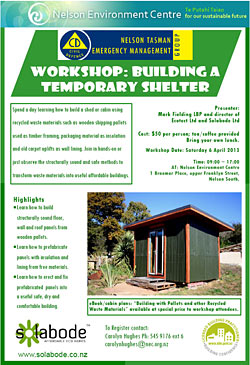
|
|||
|
||||
Ecotect director Mark Fielding, of Nelson, has been interested in building energy efficient, Luckily for Mark, times have changed, with Ecotect now focusing exclusively on designing affordable eco homes or renovations and energy efficient retrofits. Mark says there is a growing interest in building ‘eco’ homes, with increasing numbers of people recognising the huge benefits of living in safer, healthier environments. “People are now wanting something that is safer and less toxic, as well as a home that is energy efficient and also locally produced. Building sustainable homes makes very good sense, whichever way you look at it”. OPEN THE FULL ARTICLE HERE (500KB PDF)
|
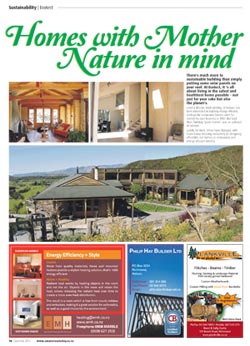 |
|||
|
|
|||
At first glance you might think that Mark and Debbie’s 392sqm property on a steep slope on an urban street is an unlikely, if not downright impossible, spot for supporting a self-sufficient lifestyle. But they’re living proof that size really doesn’t matter - although it might help if you have a flair for innovation, a magpie’s penchant for all things recycled and a certain willingness to get your hands dirty! The house cladding is a product called Onduline, made from 50 percent recycled paper and cardboard and bonded together with bitumen. It’s a French product that’s been used in New Zealand for over 60 years and looks like corrugated iron, but feels like a thick and gritty cardboard to touch. Although Mark prefers to use New Zealand made products whenever possible, he says he chose Onduline because it was “organic, cheap, durable, low maintenance and economic to fix. It also looks great, especially when contrasted with stained macrocarpa.” Because of Mark’s work as an eco-home designer, he holds himself to a high standard and is quick to downplay his own property as an example of an eco-home. “This house was built years ago from an earlier vision. If I was building again now, I’d love to create a home that was fully self-sustaining and ‘off the grid’. I’m influenced by people like Michael Reynolds who created the ‘earth ships’ in New Mexico, built entirely from so called ‘garbage’ products,” he says. Nevertheless, the home still boasts many innovative eco features that help Mark and Debbie reduce their impact on the planet, including a Kiwi Bog Composting Toilet with a solar-driven fan (in addition to their greywater flush toilet). Mark says through his work, he’s done a lot of research into ‘humanure’ (human manure) and composting toilets, and the Kiwi Bog was an easy choice. “It’s the cheapest on the market, its easy to use and it’s also the simplest system to install. A lot of designs require a lot of structure and installation underneath, which means they’re not portable but this one doesn’t. It also looks good,” he says. The Kiwi Bog has a unique urine separating tray which diverts off to a 250 litre grey water tank with a tap which is used for garden watering. Solid waste drops into a biodegradable plastic lined bucket below the toilet seat and covered with sawdust after use, then emptied every few weeks. The quiet, low power fan helps ensure an odour free bathroom. The bags need to be stored for about three months to kill potential pathogens before being added to a worm farm or compost. While Mark is a total convert, Debbie admits she’s still coming around to the idea. “I am getting there with it, it’s just that in the US where I come from, I’d never even seen one of these!” she says. Plus, because Debbie works from home she likes to keep the flush toilet option available for her massage therapy clients. Mark and Debbie’s garden is a bit of an engineering feat given the 1:3 gradient of the slope. Created from scratch just two years ago, they’re now making the most of every spare inch of space and there are bigger plans ahead. Mark says up until two years ago, he and Debbie had never considered themselves as gardeners, but they now regret not starting earlier. “Initially I wanted nothing to do with gardening. We grew 3 foot tall grass extremely well! Then I guess consciousness shifted and we started out with a few lettuces in a recycled styrofoam box on the deck – that got us hooked,” Mark says. Debbie agrees and says creating the garden has been great for their relationship as well as their eating habits. “From when the garden has started producing, we’ve had something from it every day. Our goal is to eventually be completely self-sufficient off the garden including storing food for winter “It’s also been a really bonding thing for us to do together as a couple. Every relationship needs a shared goal!” The garden benefits from the efficient link between the house and garden, starting with the storage room built under the house and into the bank where the cool temperatures make it perfect for storing winter garden food. There are good sized organic vegetable gardens with winter protection for maximum production. Five hundred kilos of recycled concrete pavers, on scrap polystyrene insulation, provide thermal mass paths in the greenhouse that help to keep plants from freezing overnight. Mark’s magpie tendencies and innovative ideas can be seen throughout the garden, from the soil filter constructed from an old wire wove bed base to their compost mixer and the covered bathtub used for initial storage of Kiwi Bog waste. When asked what advice he’d have for other urban homeowners with small sections who want to become more self-suficient, Mark offers the following advice: “Get a composting toilet and read ‘The Humanure Handbook’. Get into growing your own veges and consider becoming a vegetarian. In doing just one of these things, you’ll be helping to save the planet.” Mark and Debbie’s property is one of the homes that will be showcased as part of the Home & Garden Tours on the weekend prior to Ecofest 2010 in Nelson on 21 & 22 August. Ecofest is a joint event between Nelson City Council and Tasman District Council. Since its beginnings in 2001, Ecofest has become established as one of the biggest showcases for eco-innovative products, services and messages in New Zealand, attracting an audience of around 8,000. This year, Ecofest celebrates its 10th birthday. Prior to the Expo are the eco home tours, an urban edible garden tour, a sustainable business tour, and a Top of the South Food Challenge. The Expo on 21 & 22 August then includes birthday gala celebrations, with celebrity guest speakers, over 120 stands, kids’ activities, workshops, demonstrations, entertainment and cooking demonstrations with celebrity chefs. For more information see www.ecofestnelsontasman.co.nz Addendum: Since this article was written the greenhouse has be ‘upgraded’ to include an active solar heat storage system featuring an old solar water panel hooked up to a salvaged copper hot water cylinder (stripped of insulation) via simple thermosyphon circulation (see photos). The water cylinder heats up during the day and radiates heat as it cools down at night protecting plants from frost damage. The plan is also to use ‘Aircell’ foil bubble wrap pulled over the greenhouse on winter nights to help reduce heat loss.
|
|
|||
Affordability and sustainability are two hot topics in the building industry. We look at one designer who is passionate about combining them, designing affordable, sustainable houses. Mark Fielding is the principal of small Nelson home design consultancy Ecotect Ltd (www.ecotect.
co.nz), so named to reflect a
commitment to only undertake commissions that are green enough for Mark’s own peace of mind. Mark says his work isn’t about architecture, it’s about home design. He often feels that his is a lone voice trying to marry affordability with sustainability. Aware that all new construction is using some of the planet’s finite resources, OPEN THE FULL ARTICLE HERE (250KB PDF) |
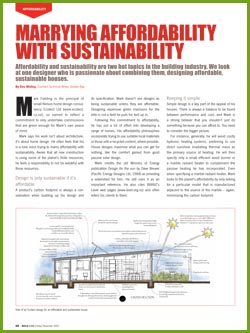 |
|||
INNOVATIVE DESIGN SOLUTION FOR AFFORDABLE SOLAR ECO HOME Local architectural designer Mark Fielding of Ecotect Ltd has developed a low cost housing solution using passive solar design for space heating and energy efficiency. The SOLABODE™ is an affordable eco home designed from the ground up for modern living without compromising comfort the environment. Almost totally heated by incorporating careful Passive Solar design, the Solabode™ harnesses free energy from sun without the need of mechanical assistance. The Nelson region is ideally situated to take full advantage of this simple concept which is nothing but a careful choice of materials and design considerations. Solid walls inside the home are built using natural sun-dried adobe blocks made from our own Moutere clay. Combined with an exposed, naturally- sealed concrete slab floor, this heavy thermal mass stores radiant heat from the sun to keep the home warm at night andon cloudy days. Insulation forms one of the key elements to this high performance home, not just with the extra levels in the walls and ceiling, but also with special attention paid to the concrete slab and foundations where a thick thermal break is used to contain the stored solar energy. Carefully selecting natural and recycled products, such as locally grown Douglas Fir framing timber and natural wool insulation, helps avoid the use of harmful chemicals keeping the home safe for occupants and tradespeople alike. Every effort is made to source local or New Zealand made materials to reduce dependence on fossil fuels during manufacture and transportation - and to keep our own people and industries in work. The Solabode™ Affordable Eco Home was a winner in the ‘Special Projects’ category; ADNZ Regional Design Awards 2008. Building costs are around $1800/m2 for a two or three bedroom home. Join the ‘Eco-Tours’ in early August to visit two recently built Solabode™ homes in Tasman and Golden Bay. |
||||
|
Publisher: Nelson Mail in "The Leader", Nelson & Richmond Waimea Version, Motueka/Golden Bay News I found out recently that this campaign is not government funded but run by a private company. (www.buynz.org.nz) I thought “brilliant! where do I join, sign me up”… I also thought “how sad, why isn’t this government funded, as it’s surely worthy”. While this raises questions about our government and why they are not promoting kiwi made, it also strengthens the notion that this campaign is perhaps a plausible answer for our current economic woes, that if more consumers and businesses got on board we could make our economy more sustainable, relying less on cheap imports while strengthening local employment opportunity. The Solabode affordable eco home (www.solabode.co.nz) incorporates products that in many cases are either natural or made from recycled raw materials. More to the point is that in almost all cases, products are sourced either locally or nationally. Products used in Solabode homes that are not made in NZ were chosen because they were either not available here at all - sad but true like most kitchen and plumbing fittings, or no local product could compare favourably when considering all performance / cost aspects in a life cycle assessment analysis (www.level.org.nz)
|
||||
|
Publisher: Nelson Mail in "The Leader", Nelson & Richmond Waimea Version, Motueka/Golden Bay News Almost all energy we use is sourced from the sun, yet solar energy is quite under utilised in our homes. While solar water heating is well known, sunshine as a primary energy source for heating is not widely used, and yet it’s free! Low angle winter sunlight through north glazing provides as much as 1kWh of energy per square metre. Multiply your total north glazing area by 6 hours of effective sunshine and your home has probably received in excess of 100kWh of free energy, that’s about $25 worth per day! A well insulated building will slow heat loss, but you can also store free heat making it available for later use, thereby saving the need for purchased energy. ‘Thermal Mass’ as insulated concrete floors and masonry walls, will store captured solar energy in the same way that old ‘night-store’ heater used electricity to heat concrete blocks which radiated heat long after being turned off. A Passive Solar Home is dryer and healthier and offers improved comfort with nothing to do but open and close the drapes. The Nelson region is ideally situated to take full advantage of this simple concept which is nothing but a careful choice of materials and design aspects.
|
||||
“I am only one person, what can I do?’ – “Even if I do something, will it make a difference?” We now know that the environmental issues facing our world are larger and more imminent than at any other time in human history. Our planet has not faced such enormous pressures ever before in its 4.5 billion year history, all of it caused in the last few decades.So, “What can I do?” By just asking that question, we start making a difference. We can’t be all things to all men, but if we do what feels right to us, then we can play a small but vital part. Even small contributions will make a difference and the cumulative effect will change the world. It must because it’s more a matter of being than doing – being conscious, a simple shift in attitude. In nature there is no waste. All discarded material is food for others; the exhaled gas from plants is the breath of life for animals. When making the next decision on how to interact with the world, why not follow what nature would do and find a unique way to solve whatever problem you perceive?
We collectively created this
mess. We can collectively
clean it up.
|
||||
Please click on the thumbnail to open the article. |
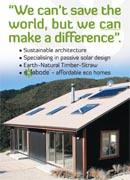 |
|||
That’s a question many will be asking
while reading this publication -
suddenly the word sustainable is hip
not hippy. |
||||
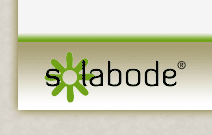
Contact Ecotect - All emails replied to within 24 hours; Please also check your Spam folder.
© 2010-2018 Ecotect.co.nz
